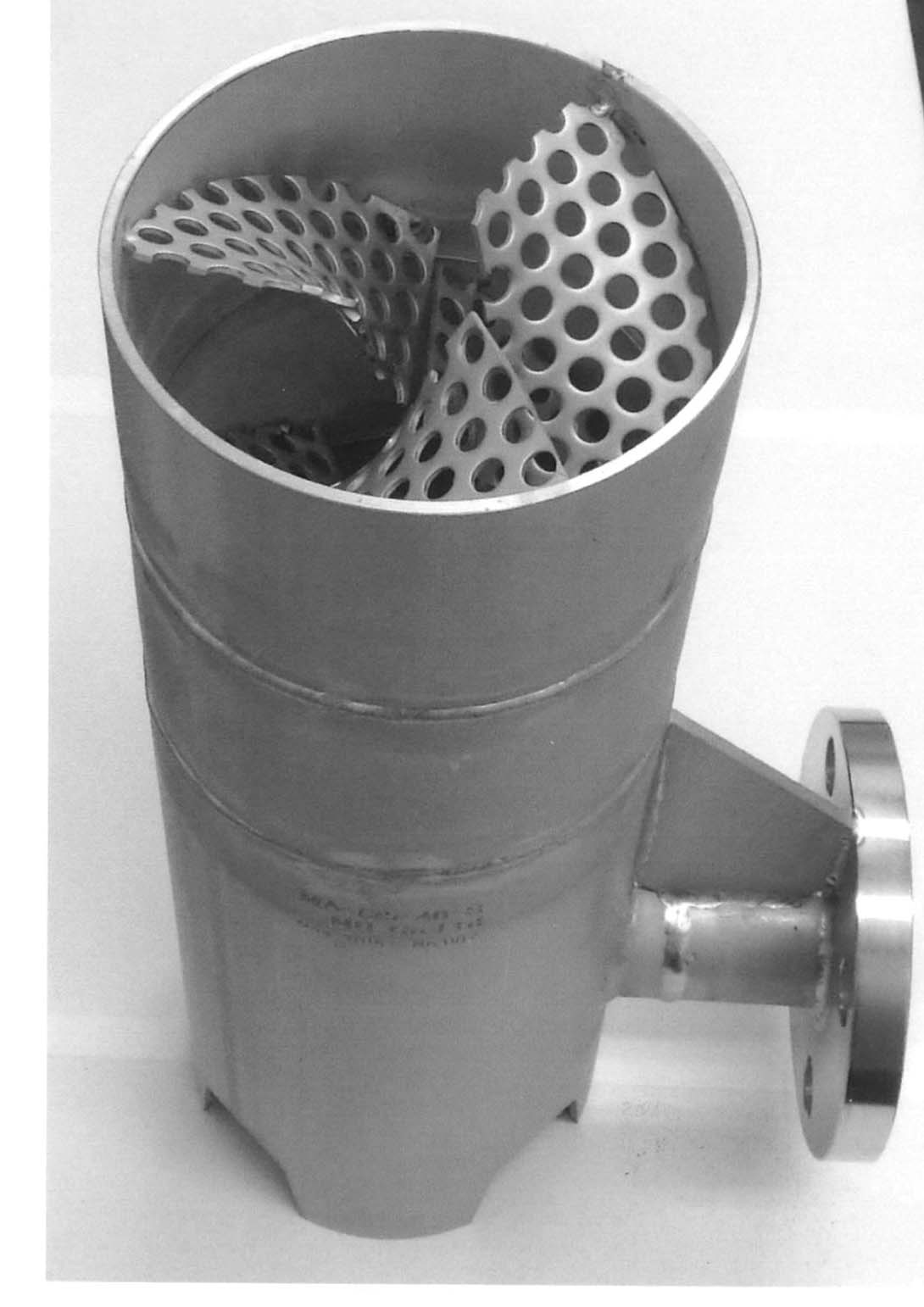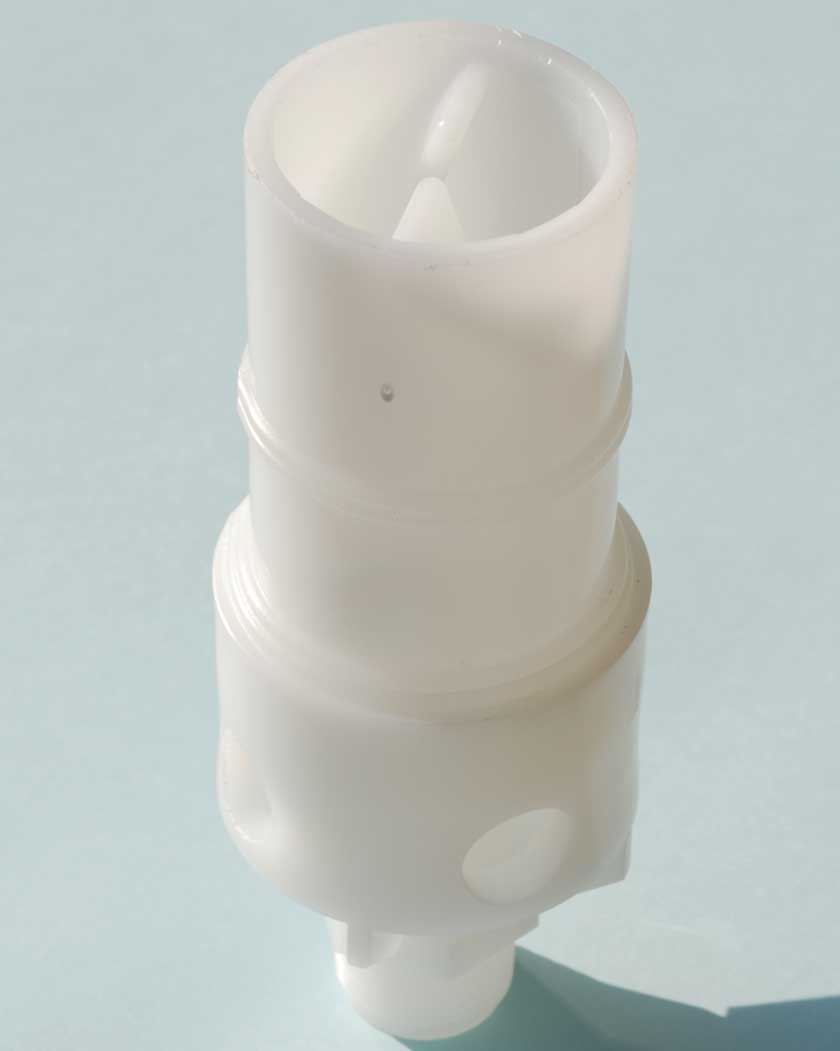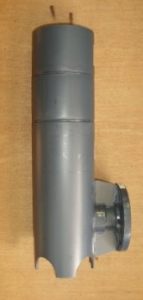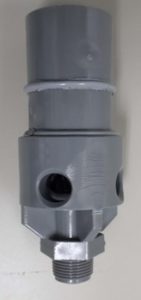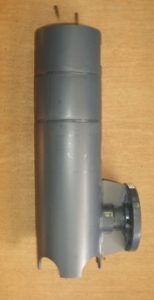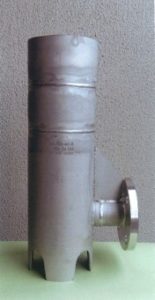Overviews
MU Aerator is a smaller version of the MU Green Reactor, with essentially the same functions and principles. This diffuser uses a static fluid mixer that combines mixing and agitation functions with the efficient supply of oxygen to liquid by generating microbubbles and a strong circulating flow through the synergistic effect of the MU Mixer® and MU Oscillator.
Operation status of MU Aerator(MA-10 9m3)
Operation status of MU Aerator(MA-10 12m3)
Operation status of MU Aerator (MA-10 18m3)
Operation status of MU Aerator(MA-10 24m3)
Operation status of MU Aerator(MA-10 30m3)
Operation status of MU Aerator (MA-10 45m3)
Operation status of MU Aerator
Operation status of MU Aerator(MA-25 1m3)
Operation status of MU Aerator(MA-25 9m3)
Operation status of MU Aerator(MA-25 20m3)
Operation status of MU Aerator (MA-25 36m3)
Operation status of MU Aerator(MA-25 53m3)
Operation status of MU Aerator (MA-25 60m3)
Operation status of MU Aerator (MA-25 80m3)
Operation status of MU Aerator (MA-25 98m3)
Operation status of MU Aerator (MA-125 9m3)
Operation status of MU Aerator (MA-125 20m3)
Operation status of MU Aerator (MA-125 36m3)
Operation status of MU Aerator (MA-125 53m3)
Operation status of MU Aerator (MA-125 60m3)
Operation status of MU Aerator (MA-125 80m3)
Operation status of MU Aerator (MA-125 95m3)
Principles of the Product
This product is directly attached to an air pipe that supplies gas, and the compressed air sent is injected at a high speed of 10 m/s or more upward. The jetted gas first passes through an oscillation element with a spiral wing and then passes through MU Mixer to form a gas-liquid mixed phase jet. The oscillation element causes an oscillation phenomenon in gas and liquid, and MU Mixer applies division, rotation, merging, and inversion to this gas. High density microbubbles are generated by the oscillation element and the MU Mixer, and the reactor circulates liquid in a tank, and the entire liquid in a tank is aerated, mixed and stirred.
Features of the Product
This product is superior to conventional products in terms of price and performance.
As a result, running costs were reduced by more than 20%, maintenance costs were eliminated, and initial costs were reduced by 80%, resulting in a significant reduction in total costs.
In terms of performance, this mixer surpasses conventional static mixers in oxygen absorption efficiency, which is more than 1.5 times that of conventional mixers (*1). In addition, if the compressed air pressure is 0.3 MPaG or higher, the bubble generation rate is further increased. The material used is polypropylene, which has excellent corrosion resistance, mechanical strength and safety. It is easy to install, and you only need to attach it to the air supply pipe, and the size is smaller than the conventional product. (*1: When the supply air pressure is 0.1 MPaG or more)
Applications of the Product
Utilizing the aeration effect of this product, it is used as an air diffuser for activated sludge treatment, and also as an underwater mixer by mixing and stirring effect.
Difference from MU Green Reactor
Basically, the principle and function are the same as those of the MU Green Reactor, but the processing capacity is different. This product is divided into three types according to the diameter, but the largest type has a blast volume of up to 2.0 m3/min per unit, and the agitatable area per unit is up to about 7.0 m2, and the standard aeration tank depth is 1.5 m.
Three features of MU Aerator on price
No power pump required -> 20% saving of running cost
Like MU Green reactor, it produces microbubbles without using a gas-liquid mixing pump and has a void rate 4 to 6 times higher than that of a conventional static mixer of the same size. In other words, bubbles can be generated efficiently with less energy because the pump is not used. In addition, the bubbles generated are microbubbles that cannot be generated by conventional static mixers or other mixers of the same scale, and they are bubbles that are very efficient in dissolving gas compared to ordinary bubbles. (See “(Supplement) the property of a microbubble ” for more information.) As a result, the aeration efficiency per unit energy is high, and the running cost is reduced by 20% compared with the conventional diffuser plate.
No moving parts, screw connection, low pressure loss -> No maintenance cost
The principle of this product is basically the same as that of the MU Green Reactor. Since the equipment itself has no moving parts, there is no need to replace parts due to wear or repair of the moving parts. The material is non-metal, and it is connected to the existing piping by screwing, and bolts, etc. are not used for flange connection, etc., so there is no risk of rust in the connection part, and replacement of bolts, etc. is not necessary. In addition, since the diameter of the air injection part is large (10 mm or more), there is no risk of clogging, and the maintenance cost can be kept to zero.
No power pump required, simple structure, high performance -> about 80% saving of running cost
There are three main reasons for the low price of this product. First, it does not use complicated piping such as those used in power pumps, diffusers, diffusers, etc. In addition to the cost of power pumps and piping, there is no need for the cost of materials, assembly, and rust-proofing of the steel frame of the piping frame, as well as the cost of fixing the frame to the concrete floor with anchor bolts and marking the position of the anchor bolts.
The second is the simplification of the product structure. This product is composed of MU Mixer and an oscillation element. The mounting port is a male screw for direct connection to existing piping. However, products are made from a single mold, rather than individual components such as MU Mixer and MU Oscillator. The advantage of making from one mold is that you can reduce the time and effort of assembling. But that’s not the only benefit. The joints are usually weaker than the others and must be reinforced to withstand the stresses on the joints. If it is made from one mold, the members and labor necessary for reinforcement and the process to fill the gap between the members are not necessary. This extreme reduction in waste is one of the reasons for low prices.
In addition, we were able to reduce the size of the product due to its high performance, which was one of the factors that kept the price down. By generating a circulating flow and microbubbles with high efficiency, the whole aeration tank can be aerated extremely efficiently, and as a result, the size of the product can be reduced and the product can be provided to customers at a low cost.
The secret of high performance
The basic principle is the same as that of the MU Green Reactor. The MU Green Reactor consists of multiple perforated wings, whereas the mixing element of MU Aerator is smaller and does not have holes in the blades. However, it has the following three features and generates microbubbles and a strong circulating flow. (Note: The following three feature statements are the same as for MU Green Reactor.)
Creating a straight flow and a spiral flow
In a conventional static mixer, the flow of fluid in the element was only a spiral flow along the wings. However, in our product, in addition to the spiral flow, a straight flow is added to the center of the axis, creating two flows with different speeds and directions within the element. This difference in velocity causes shearing force, which causes the fluid to vibrate and the fluid to be miniaturized, leading to improved mixing efficiency.
Refinement of gases
(What is an Oscillation Element?)
MU Oscillator is a static mixing device with gas swirling and shearing functions that generate strong spiral. It is attached to the gas injection part and is injected into the liquid from the bottom to the top at high speed (10 m/s or more).
Inside the Oscillator, you will see two twisted wings with void at the center in the axis direction.
(Two different flows making vibration)
Pressurized gas emitted from the injection section at high speed can be divided into two flows in MU Oscillator, like MU Mixer. These are the flow spirals along the wings and the flow going straight through the hole at the center in the axis direction. Oscillation occurs due to two different speeds of the swirling flow and the straight flow.
(What is the oscillation phenomenon?)
In a word, this oscillation phenomenon is the vibration of gas. This vibration has an effect of accelerating the refinement of gas, and is specifically caused by the following four phenomena.
1. Turbulent vortices are generated and collapsed by high speed jet of pressurized gas into liquid.
2. Since pressurized gas becomes in a state of self-excited vibration, a phenomenon in which an external force that causes vibration increases the vibration width or the vibration continues due to the vibration itself, sound waves of 200-1000 Hz are generated.
3. The pressurized gas is jetted into liquid from the jetting part, and cavitation is generated by pressure drop accompanying the jet.
4. The pressurized gas is divided into a flow which goes straight through the center part of the oscillation element and a flow which turns along the wing body, and shearing force is generated from the difference between the two speeds.
Generation of circulating flow
One of the features of this product is that it effectively aerates the liquid in the whole aeration tank by generating a strong circulating flow. Conventional microbubble generators do not generate a strong circulating flow, so only the fluid around the device is aerated. To cover the entire tank, it was necessary to enlarge the device or install multiple devices or underwater mixers. However, by generating a strong circulation flow, the overall reaction speed of the tank, or processing speed, is increased, enabling aeration of a large volume of fluid with small energy, and dramatically improving energy efficiency.
Characteristics of microbubbles
How big is microbubble? Microbubbles are defined as “Fine bubbles of 10 to several 10 microns (μm) at the time of generation.” It is said that the average hair thickness of Western women is about 50 μm. Roughly speaking, it is a bubble smaller than the thickness of hair. Microbubbles have the following characteristics compared with ordinary bubbles, and contribute greatly to the efficient aeration effect.
01 Disappearing in water
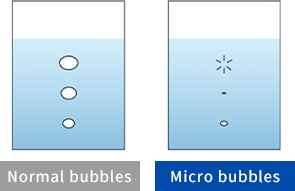
The biggest difference between regular bubbles and microbubbles is that microbubbles disappear in water. As shown in the figure above, normal bubbles rise in the water due to buoyancy, and as the water pressure decreases, the internal pressure applied to the bubbles also decreases, the size of the bubbles increases, and the bubbles burst on the surface.
On the other hand, in contrast to the normal mechanism, microbubbles decrease in size as they rise and disappear in water. This is because the surface tension of the water acts on the boundary between the bubble and the surrounding water (gas and liquid), pushing the bubble in all directions. The pressure applied to the bubbles gradually reduces the size of the bubbles, eventually causing them to collapse under extremely high pressure.
Because microbubbles rise very slowly, the effect of surface tension is greater than the effect of change of water pressure, and thus a phenomenon different from normal bubbles occurs. This “Bubbles disappear in water” phenomenon occurs when the surface tension of water increases the pressure inside the bubble and the rising speed of the bubble is very slow.
Let’s take a closer look at the relationship between these two phenomena and “dissolution capacity of bubble.”
02 High pressure inside the bubble
The pressure applied to the bubble is based on the Young-Laplace equation, and the diameter of the bubble is inversely proportional to the pressure. This means that as the bubble diameter decreases, the applied pressure increases. For example, a 10 μm bubble has a pressure of about 0.3 atmospheres, and a 1 μm bubble has a pressure of about 3 atmospheres. The dissolution of a gas into a liquid follows Henry’s law, and since the pressure (partial pressure) of a gas is proportional to its dissolution, the higher the pressure, the more the gas dissolves.
03 Slow rise rate
According to Stokes’ law, the rise speed of microbubbles is proportional to the square of the bubble diameter. (This relationship holds up to a bubble diameter of 150 μm.) According to the actual measurement data, a bubble with a diameter of 1 mm ascends 6 m in a minute, while a bubble with a diameter of 10 μm ascends only 3 mm. In other words, the rising velocity of a 10 μm bubble is approximately 1/2000 that of a 1 mm bubble. Since the rising speed is slow, the residence time in liquid is long, which increases the time for gas to come into contact with liquid, thus increasing the gas dissolution efficiency.
From feature 2 and 3, we compare the melting ability of bubbles with diameters of 1 mm and 10 μm. In feature 2, since the internal pressure of a bubble (= solubility) is inversely proportional to the diameter of gas, a 10 μm bubble has 100 times the dissolution capacity of a 1 mm bubble. In addition, as described feature 3, since the rising speed of a bubble of 10 μm is about 1/2000 of that of a bubble of 1 mm, a bubble of 10 μm has about 2000 times the dissolving capacity of a bubble of 1 mm. Simply multiplying the effect of internal pressure (feature 2) by the effect of rising velocity (feature 3), the dissolution capacity of a 10 μm bubble is 2 × 10 times 7 or 20 million times greater than that of a 1 mm bubble. In fact, there is no such difference due to various conditions such as the convective effect accompanying the rise of bubbles, but in any case, there is no doubt that it has an incommensurate melting ability.
In this way, microbubbles have a much higher dissolution capacity than normal bubbles and can be aerated efficiently. In addition, the microbubbles are charged to negative ions, and as the microbubbles shrink, the ions become more and more concentrated, generating free radicals. Free radicals are highly reactive and can be used for chemical reactions and water purification.
*Reference: “Foam Engineering(泡のエンジニアリング)” (ISHII Yoshio, Techno Systems, 2006(石井淑夫、テクノシステム、2006年)), “Trends in microbubbles and nanobubbles(マイクロバブルおよびナノバブルの動向)” (Masayoshi TAKAHASHI, M&E July 2008 issue(高橋正好、M&E 2008年7月号))
Comparison of feature between this product and other products
Comparison of features between this product (MA -25) and other companies' products
|
MU Aerator |
A-company’s static mixer |
Motion mixer | Diffusion plate | |
| price ratio ※ | 30 | 100 | ―― | ―― |
| product life | Long | Long | Short | Short |
| clogging | Non exist | Non exist | Exist | Exist |
| sludge accumulation | Non exist | Non exist | Exist | Exist |
| replacement of parts | No need | No need | Need | Need |
| mixing pump | No need | No need | Need | No need |
| power consumption | Small | Small | Large | Large |
| ratio of micro bubbles generation | 60 vol% | about 10 vol% | No | No |
| circulation flow | Exist | Exist | Non exist | Non exist |
| installment space | Small | Small | Large | Large |
※ Comparison with static mixer of another other company, set as 100, under the condition of 1 m3/min of air supply.
Comparison of feature between this product and other products
Comparison of features between this product (MA -25) and other companies' products - 2
| MU Aerator | A-company’s static mixer | |
| price ratio ※ | 30 | 100 |
| components | A body consisted of MU Oscillatorand MU Mixer※1 | A body with two semicircular plates and small outshoots on surface |
| supplying air(m3/min) | 1.0-2.5 | 0.2-0.5 |
| ratio of micro bubbles generation | 60 vol% | about 10 vol% |
| dimension(mm) | D60*H190 | D90*H500 |
| materials | PP or PVC ※2Molded product | ABS with SUS |
| injected speed of air-liquid phase(m/s) | 4-10 | 1.5 |
| Possible stirring dimensions (m2) | 5-7 | 2-3 |
| efficiency of dissolving oxygen(%) | 5-12 | 3-9 |
| KLa(20)hr-1 | 35-50 | 4-10 |
| pressure loss(kPa) | 0.5-5.0 | 0.2-1.6 |
| the way of connecting pipe | screwed by external thread, PT25A(1B) | flanged connection, 25A flange |
| durability | Very Excellent | Excellent |
| abrasion resistance | Very Excellent | Excellent |
| piping work | only screwing and easy | flanged connection by volts and nuts and troublesome |
| weight | PP 200g、PVC 350g | 6kg |
* Comparison with static mixer of A company, set as 100, under the condition of 1 m3/min of air supply.
*(1) Oscillation element is an element that causes an oscillation phenomenon by a straight flow that goes straight through the center of the element and a spiral flow that turns along a spiral wing body by injecting fluid at high speed (10 m/s). (This phenomenon is not theoretically established, but a private theory of our company.)
*(2) PVC is lead-free.
Specifications
Specifications
*Please note that model MA-125-40 (materials: PP, PVC, SUS316) is made to order, and the minimum purchase quantity is 5 units.
*Please contact us for price. *Required air pressure: 20 kPaG to 0.5 MPaG


